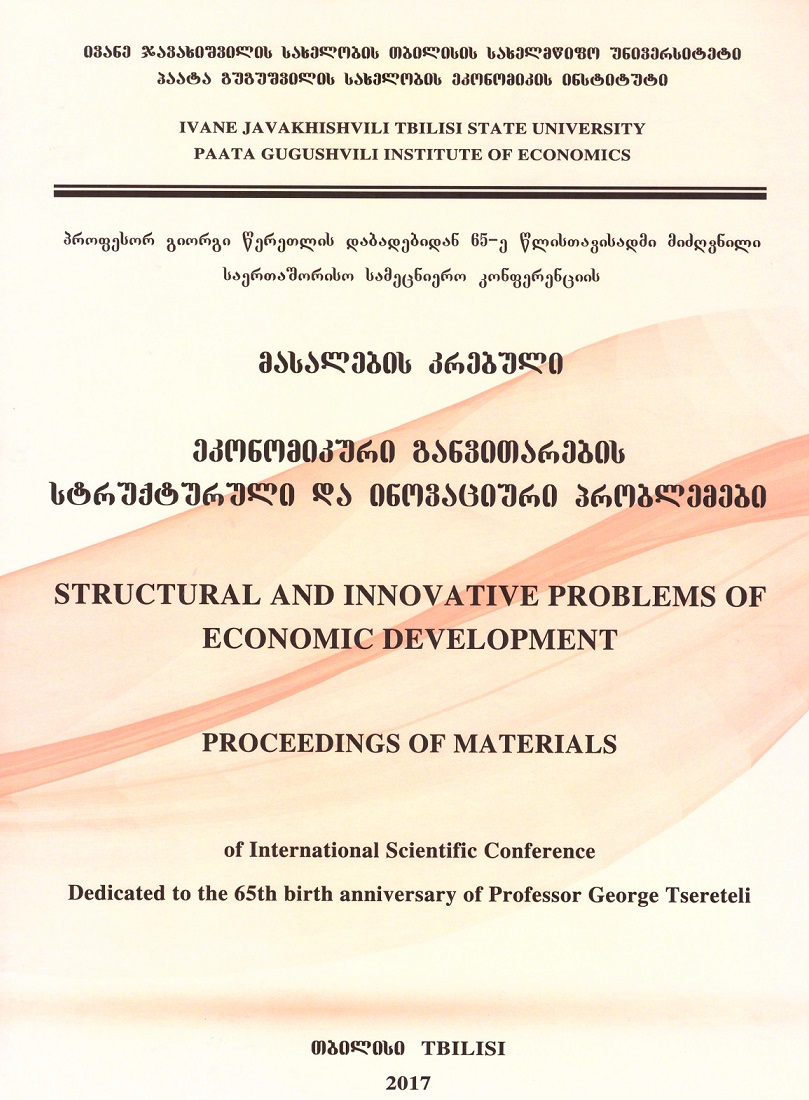
Ivane Javakhishvili Tbilisi State University
Paata Gugushvili Institute of Economics International Scientific

NEGATIVE ASPECTS OF LABOR EMIGRATION AND REMITTANCES
Summary
In the context of large-scale labor emigration, several socio-economic issues related to remittances require greater attention. These issues not only have a negative impact on the country's macroeconomic stability and development potential but also threaten the prospects for growth and the social sustainability of the national economy in the medium and long term.
The main potential threats related to remittances include the so-called "Dutch disease," "brain drain," and the problem of moral hazard.
In certain years of this century (2003-2008, 2011, 2012, 2021-2023), the Georgian national currency exchange rate against the US dollar was stronger than in the previous year. This was primarily due to large remittance inflows and foreign direct investments during these years, which totaled $39,643.02 million (with $22,718 million in cash remittances and $16,924 million in foreign direct investments). On average, a $3.0 billion increase each year significantly boosted the price of local consumer goods and the real estate market.
The continued rise in remittances and the related "Dutch disease" leads to a decline in the manufacturing sector and a weakening of the export sector. This trend makes the country more vulnerable to global and regional economic crises and increases its dependency on exogenous factors, including the volume of remittances.
"Brain drain": The visibility of wealth generated by remittances may alter the aspirations of talented, highly skilled individuals (and not only them), encouraging emigration or creating pressure on individuals with such potential. The "brain drain" involves the departure of the most qualified professionals in high-demand fields (such as programmers, doctors, engineers, and teachers)—whose education and skill development required significant public and private sector investment in their home country. Their emigration weakens public services and hampers the potential for innovation.
The Georgian state budget annually provides a "subsidy" of approximately 35-45 million GEL to countries receiving labor migrants from Georgia, based on the most conservative estimate.
An institutional trap of remittances is that a significant portion of these funds is used to "prepare" the young workforce for emigration, rather than investing in the domestic economy. Instead of exporting goods produced by the local workforce, the "seasoned" workforce seeks opportunities abroad.
Moral hazard and the political trap: The process of remittances not only affects macroeconomic and microeconomic parameters but also alters the incentives, motivations, and behavior of economic agents. In the context of labor migrant remittances, moral hazard often arises when recipients or intermediaries engage in risky or ineffective behaviors, ignoring, tolerating, or failing to recognize the full consequences of their actions.
The risks associated with moral hazard manifest in several ways:
a) The potential decline in motivation and desire to engage in labor activity among recipients, along with neglect of local income-generating opportunities.
b) The initiation of risky or economically unjustified activities, such as gambling or drug use, based on the assumption that migrant-sent funds will continue to flow indefinitely. There is also a risk that remittance channels could be exploited for money laundering or terrorist financing.
A large inflow of remittances gives the local government greater fiscal and monetary flexibility, which is often misused. The government may become less focused on rational fund allocation in the public sector, channeling significant resources into questionable and unnecessary projects.
Even households receiving remittances are not immune to moral hazard. Many recipients perceive remittances as gifts rather than earned income, knowing that they can rely on this money to supplement or replace their wages. As a result, some recipients reduce their labor force participation, while others invest remittance income in riskier ventures. This can distort asset prices and exacerbate poverty by driving poor families out of the real estate market. With limited income and creditworthiness, these families are unable to improve their living conditions. Moreover, in the event of a price bubble bursting, the negative consequences would be catastrophic.
Among the legal and administrative "traps," the use of remittance flows by criminal networks to finance illegal activities or launder money deserves particular attention.
In such an environment, the most important criterion for the effectiveness of government socio-economic policy is the protection of society from the aforementioned threats. This can be achieved by avoiding the corresponding pitfalls, creating genuine domestic alternatives, and implementing rational state policies and strategies. These strategies should focus on regional development, infrastructure improvement, psychological support programs for immigrants, efforts to retain professional staff, and measures to increase motivation for domestic work. Additionally, incentivizing the return of emigrants through packages like tax benefits and other incentives is crucial to long-term economic stability.
